Suunto ZoneSense
-
@cosme-costa While the Cooper test time. You know what Cooper test is?
10 min warmup, 12 minutes run with all you have, 20 min cool down.
While all the time the graph shows green. In the last minutes of cool down it switched delayed backwards into the other zones.
BACKWARDS !!! - not in time. You know?And it is not true that all verticals are equal.
A lot of users at this time have a lot of issues with the actual Software. Mine don’t has any issues like this. So you can not compare a vertical with a vertical.PS: monitored this delay also in other long fast trainings. Example 10 km in HR 85%. Same here, all green and in the last minutes the Graph changes backwards in yellow areas.
So now belief me or not.

-
@Sportsfreund said in Suunto ZoneSense:
@cosme-costa While the Cooper test time.
And it is not true that all verticals are equal.
A lot of users at this time have a lot of issues with the actual Software. Mine don’t has any issues like this. So you can not compare a vertical with a vertical.If the hardware is identical and the software too the behaviour should be the same within the tolerances of the sensors. If it is different, or something is broken or is due at different cases of use of the watch.
@Sportsfreund said in Suunto ZoneSense:
PS: monitored this delay also in other long fast trainings. Example 10 km in HR 85%. Same here, all green and in the last minutes the Graph changes backwards in yellow areas.
85% of some value that probably is not valid that day? Is logical that your you enter in yellow/red at the end, that is where your are more fatigued. I do not have your graphs and probably I do not know enough to read them but I tend to believe that you have a big aerobic base, without stimulus at high paces or sustained high HR.
-
@cosme-costa mainly I am a rower with more than 1000km/year. Could be. I am observing my zone sense in the future.
-
@Sportsfreund said in Suunto ZoneSense:
@tschogo that’s the point why ZoneSense doesn’t work.
It seems you are in a minority here. I have had laboratory tests as well for AT and LT and VO2M. ZS does a good job with those values when I feel great. On days when I am fatigued ZS does a great job as my set HR values are incorrect. I find ZS invaluable.
I have a substantial aerobic base having run ultramarathons for 14 years. I have a good idea of my max HR, you will not hit MaxHR on a Cooper test as the test is too long. Short 1-2 min all out uphill intervals will likely come close to your max HR. I suspect your HR zones are off and ZS is likely interpreting your efforts correctly.
85% of my HR max is anaerobic at 153 but nowhere near my LT at 163. I would run a Cooper Test at above my LT at 90% or more of my max HR. My last Cooper Test was 168 bpm avg for the 12 min test and ZS nailed my LT in fact, higher than my test.
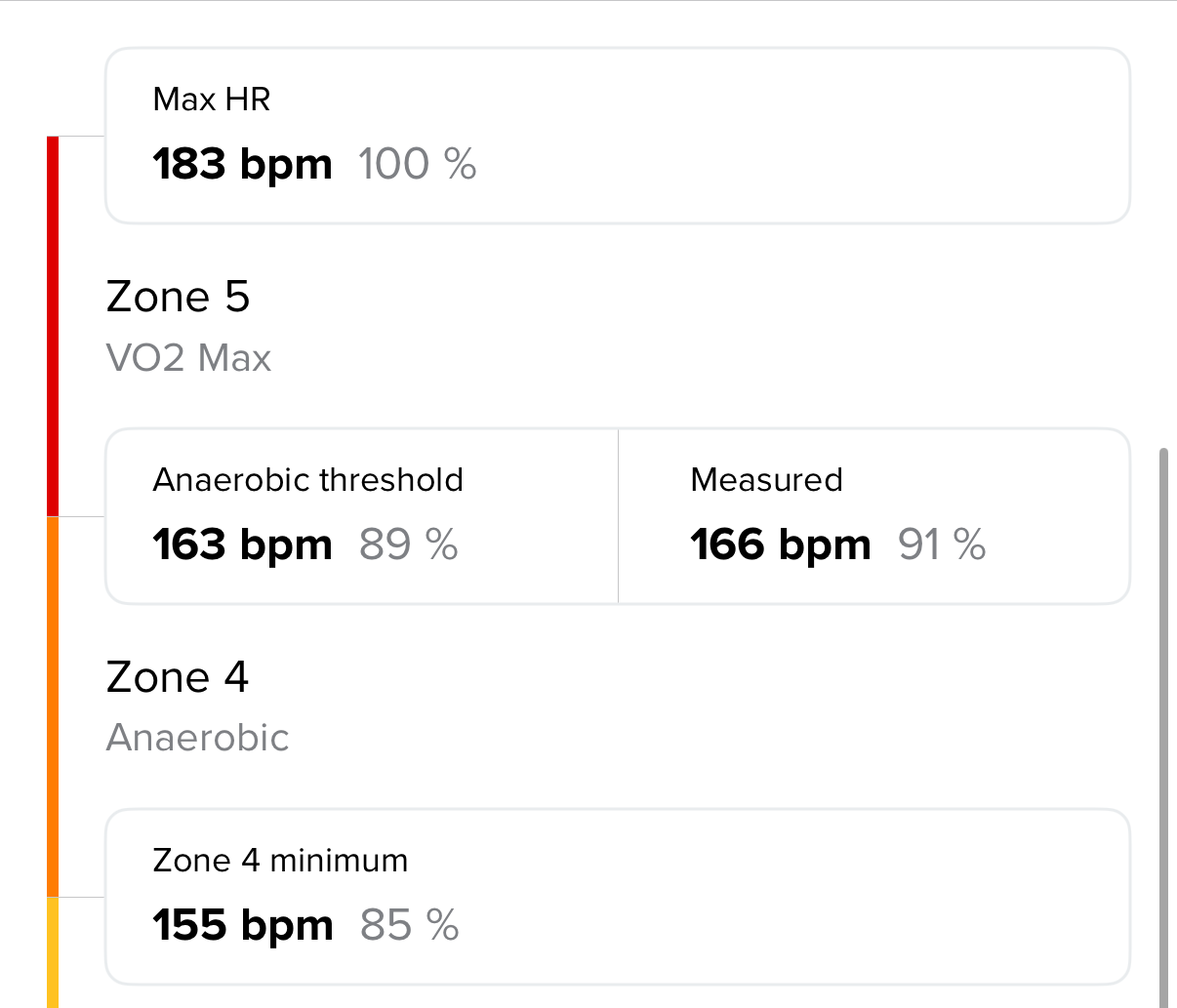
PS I am 68.
-
@Sportsfreund I am interested how Zonesense works for you in rowing.
I never rowed on water, only on ergs. For me Zonesense delivers plausible feedback and helped me to fine-tune my zone settings.
My intensity targets come from EXR where I regularly perform a ramp test. What I found out by now is, that my zones in running differ from the zones familiar to me from running.
-
@Sportsfreund … or you’re just way fitter than you assume
 ! Actually one of my trainingpartners for the II. Dan training was an ex russian rower (quite on pro level) and then in his late 50s this guy was extremely fit and could actually train for hours without appearant signs of exhaustion.
! Actually one of my trainingpartners for the II. Dan training was an ex russian rower (quite on pro level) and then in his late 50s this guy was extremely fit and could actually train for hours without appearant signs of exhaustion. -
Very interesting to read. I think Suunto needs to address this more clearly in their ad/description for ZoneSense. With this I mean how crazy widespread ones AT can be on a daily basis (on a HR scale). To me, not being any sport scientist at all, it still feels crazy, that on one day AT can be at 140, the next at 160. But I‘m very curious to see where this journey goes and will use ZS on all my upcoming trainings.
-
@tschogo said in Suunto ZoneSense:
Very interesting to read. I think Suunto needs to address this more clearly in their ad/description for ZoneSense. With this I mean how crazy widespread ones AT can be on a daily basis (on a HR scale). To me, not being any sport scientist at all, it still feels crazy, that on one day AT can be at 140, the next at 160. But I‘m very curious to see where this journey goes and will use ZS on all my upcoming trainings.
Mine vary as much or more than yours! I believe this is the power of ZS! I train primarily by RPE and ZS is scary good at matching my RPE. On days I feel even a little tired my AT has tanked according to ZS. I am primarily using ZS to keep my Endurance and Recovery runs easy enough.
-
@borgelkranz this is one of my last rows on concept2. This is the graph from the app. On the watch it was shown always green. It does not work on the watch, only the result in the app is clear.
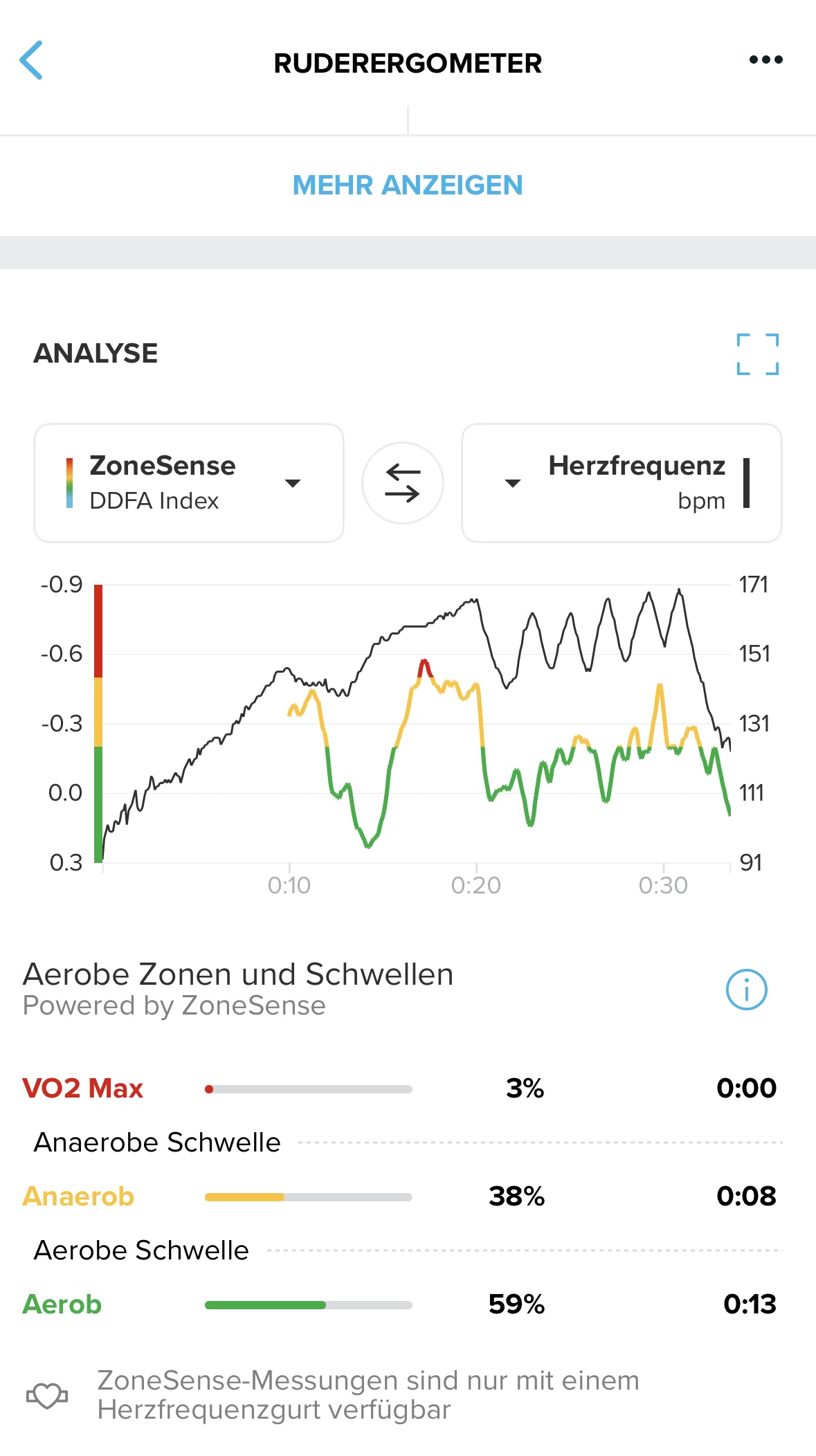
-
@Sportsfreund and I can’t imagine the waves while the heartrate is constantly rising.
-
@Sportsfreund thx for sharing.
I am too stupid to upload pictures, it appears. If you can give me a hand I will post some.Finally I found the upload button.This one is from a an 8k cadence drill. 24 spm sandwiched in 22 spm blocks (both with the same intensity) followed by a ramp test to push me to the limit. Bad idea, I know. But wanted to test whether ZoneSense detects my anaerobic threshold, which it did.
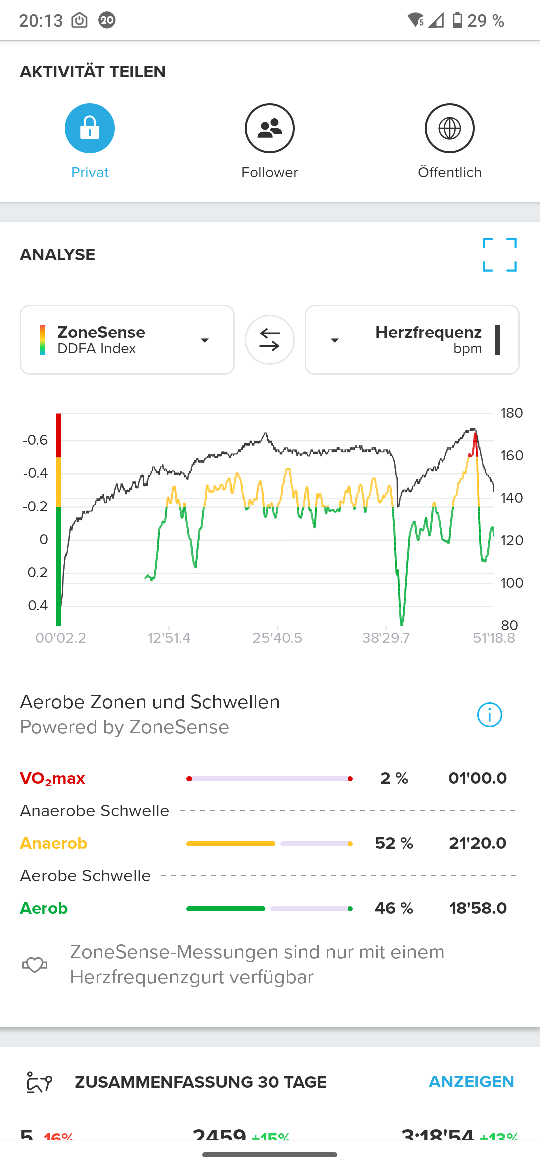
This one is from long intervals that start with 30s of VO2max intensity,directly followed by a longer perior of at around FTP:
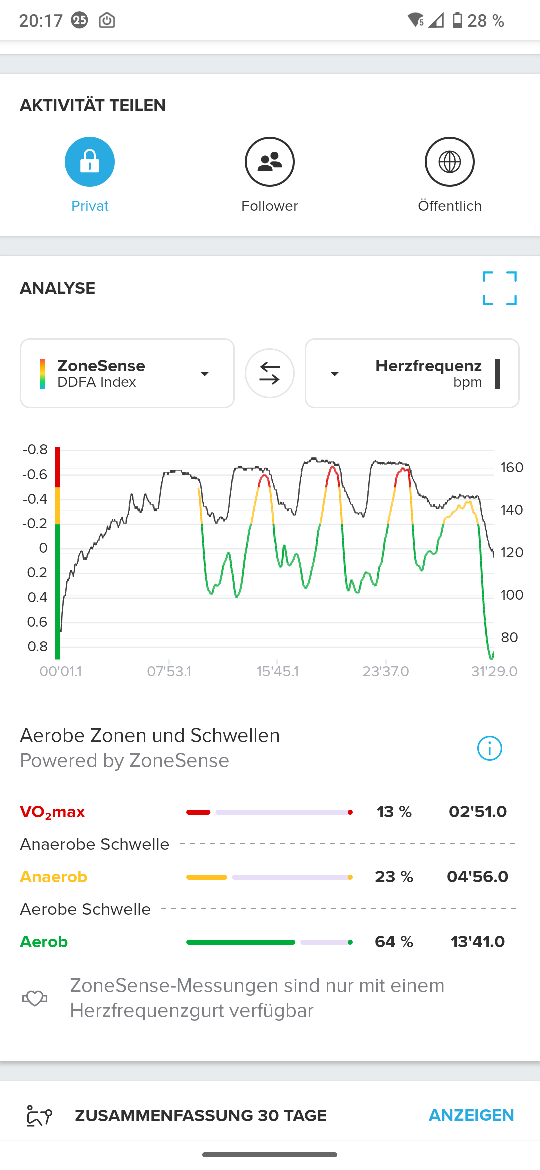
-
@borgelkranz Go to your pictures. Copy it and paste it here.
Yea this forum with its „ insert attachment“ does not work.
It only made for older user which still use a PC.
-
@borgelkranz does your watch show the zone sense graph in realtime? Or also delayed or after end activity in the app?
-
@Sportsfreund sorry I don’t get it even though I am one of the old people…
-
@Sportsfreund I do not see a graph on the watch but a bar that is color coded. Data is displayed after 10 minutes of warmup as explained in the description of the Zonesense app.
-
@borgelkranz yes. This is what I mean. I bar. A graph. A colored line. So what.
-
Regarding the delay on ZS reacting, I’ve been testing out on threshold intervals and, although this is likely quite personal, for me it is about 10s behind the related change in HR. Of course there’s often a 10s to 20s delay in my HR reacting to a sudden increase or decrease in pace so overall ZS has a total lag for me of around 30s. Personally I think that’s pretty decent given I’m used to the 20s or so lag on my HR

-
One observation I’ve seen is, if we warm-up way slower than what a regular warm-up pace is for us, this will make ZS have a lower baseline and hence thresholds (if measured) will be lower as well.
Advise is, do aerobic warm-ups but do not do them at a slower pace than your regular warm-up.
-
@Sportsfreund I actively monitored that only during a hike and during one of my bike commutes to work. I shot a foto of the watch after the hike:
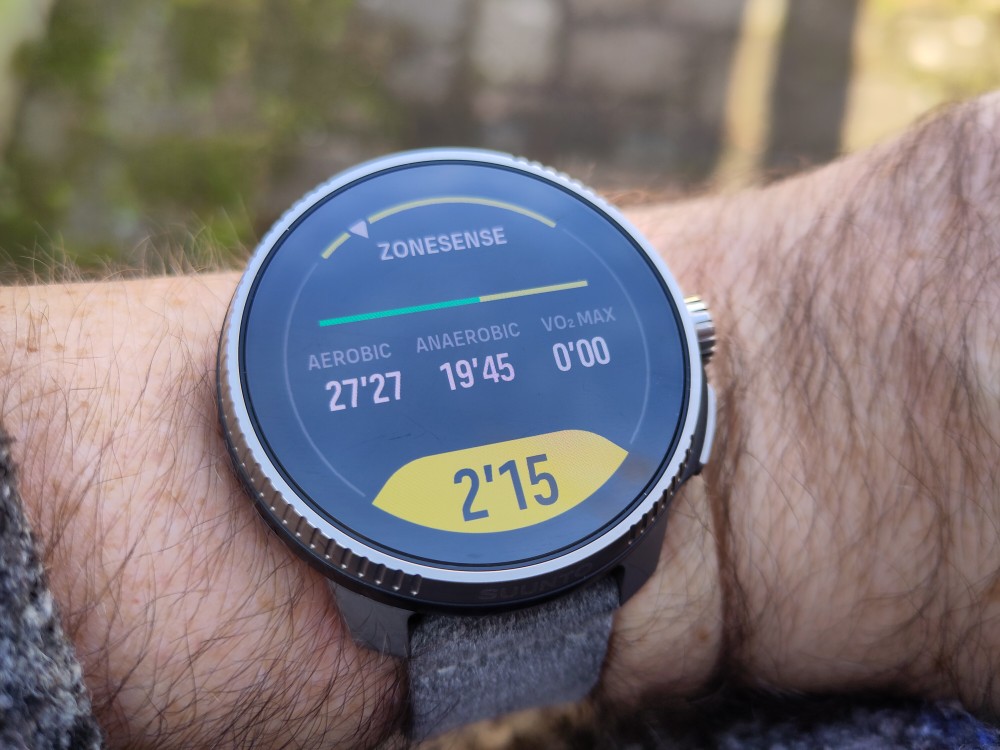
In SuuntoApp this looked like this:
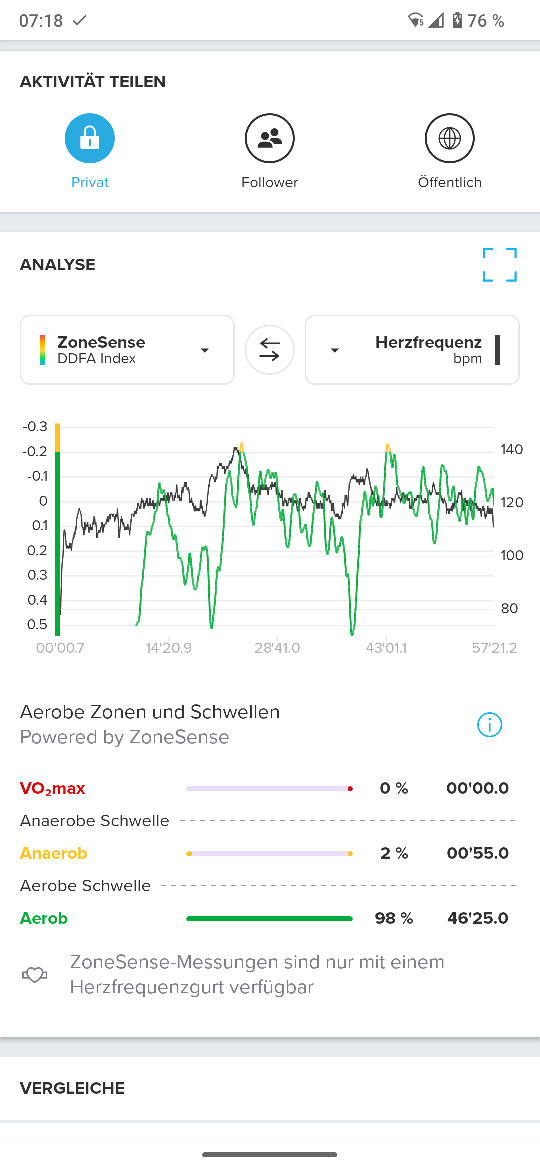
Not a perfect match I’d say…
Caveat: this was the first hike I did using a HF belt and ZoneSones. So perhaps this is not yet calibrated?
-
@borgelkranz As I said before and info extracted from the Spanish Forum, the inconsistency between watch and app should be solved with next android app version, is seems that it is already fixed in iOS.